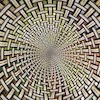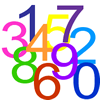Skip over navigation

Two-digit Targets
Colouring Triangles
Three Squares
4 Dom
Transformations on a Pegboard
Times Tables Shifts
Triangles All Around


Or search by topic
Number and algebra
Geometry and measure
Probability and statistics
Working mathematically
Advanced mathematics
For younger learners
Interactivities to Make You Inquisitive

Interactivities to Make You Inquisitive
Throughout history, mathematicians have used tools and technology to help them to spot patterns, develop conjectures, and make generalisations. We hope your curiosity will be tickled by the interactivities in these tasks, and that by exploring with a computer or tablet, you will have a deeper mathematical understanding than you might otherwise have had.
Two-digit Targets Age 5 to 7Challenge Level 


Age 5 to 7
Challenge Level 





You have a set of the digits from 0 to 9. Can you arrange these in the five boxes to make two-digit numbers as close to the targets as possible?
Colouring Triangles Age 5 to 7Challenge Level 


Age 5 to 7
Challenge Level 





Explore ways of colouring this set of triangles. Can you make symmetrical patterns?
Three Squares Age 5 to 11Challenge Level 


Age 5 to 11
Challenge Level 





What is the greatest number of squares you can make by overlapping three squares?
4 Dom Age 5 to 11Challenge Level 


Age 5 to 11
Challenge Level 





Use these four dominoes to make a square that has the same number of dots on each side.
Transformations on a Pegboard Age 7 to 11Challenge Level 


Age 7 to 11
Challenge Level 





How would you move the bands on the pegboard to alter these shapes?
Times Tables Shifts Age 7 to 11Challenge Level 


Age 7 to 11
Challenge Level 





In this activity, the computer chooses a times table and shifts it. Can you work out the table and the shift each time?
Triangles All Around Age 7 to 11Challenge Level 


Age 7 to 11
Challenge Level 





Can you find all the different triangles on these peg boards, and find their angles?
You may also like
Digging Into Geometry
Dig deeply into geometrical ideas by having a go at the tasks in this Primary student feature.
More Playing with Numbers Upper Primary
More resources to support understanding multiplication and division through playing with numbers

